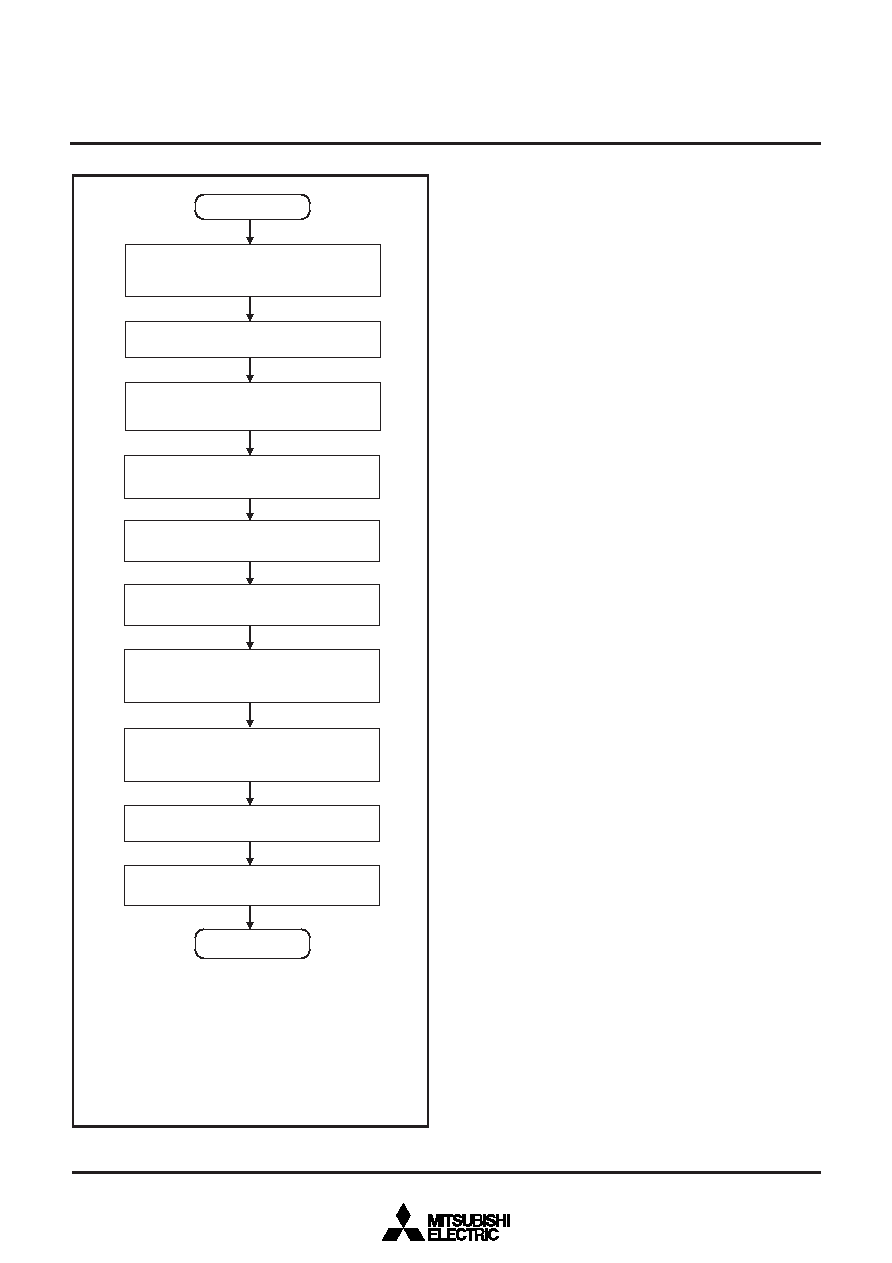- 您現(xiàn)在的位置:買賣IC網(wǎng) > PDF目錄67763 > M37920F8CGP 16-BIT, FLASH, 20 MHz, MICROCONTROLLER, PQFP100 PDF資料下載
參數(shù)資料
| 型號(hào): | M37920F8CGP |
| 元件分類: | 微控制器/微處理器 |
| 英文描述: | 16-BIT, FLASH, 20 MHz, MICROCONTROLLER, PQFP100 |
| 封裝: | 14 X 20 MM, 0.65 MM PITCH, PLASTIC, QFP-100 |
| 文件頁數(shù): | 31/155頁 |
| 文件大小: | 1274K |
| 代理商: | M37920F8CGP |
第1頁第2頁第3頁第4頁第5頁第6頁第7頁第8頁第9頁第10頁第11頁第12頁第13頁第14頁第15頁第16頁第17頁第18頁第19頁第20頁第21頁第22頁第23頁第24頁第25頁第26頁第27頁第28頁第29頁第30頁當(dāng)前第31頁第32頁第33頁第34頁第35頁第36頁第37頁第38頁第39頁第40頁第41頁第42頁第43頁第44頁第45頁第46頁第47頁第48頁第49頁第50頁第51頁第52頁第53頁第54頁第55頁第56頁第57頁第58頁第59頁第60頁第61頁第62頁第63頁第64頁第65頁第66頁第67頁第68頁第69頁第70頁第71頁第72頁第73頁第74頁第75頁第76頁第77頁第78頁第79頁第80頁第81頁第82頁第83頁第84頁第85頁第86頁第87頁第88頁第89頁第90頁第91頁第92頁第93頁第94頁第95頁第96頁第97頁第98頁第99頁第100頁第101頁第102頁第103頁第104頁第105頁第106頁第107頁第108頁第109頁第110頁第111頁第112頁第113頁第114頁第115頁第116頁第117頁第118頁第119頁第120頁第121頁第122頁第123頁第124頁第125頁第126頁第127頁第128頁第129頁第130頁第131頁第132頁第133頁第134頁第135頁第136頁第137頁第138頁第139頁第140頁第141頁第142頁第143頁第144頁第145頁第146頁第147頁第148頁第149頁第150頁第151頁第152頁第153頁第154頁第155頁

M37920F8CGP, M37920F8CHP, M37920FCCGP
M37920FCCHP, M37920FGCGP, M37920FGCHP
PRELIMINAR
Y
Notice:
This
is not
a final
specification.
Some
parametric
limits
are
subject
to change.
SINGLE-CHIP 16-BIT CMOS MICROCOMPUTER FLASH MEMORY VERSION
MITSUBISHI MICROCOMPUTERS
126
Fig. 121 CPU reprogramming mode set/termination flowchart
Software Commands
Table 26 lists the software commands.
By writing a software command after the CPU reprogramming select
bit has been set to “1”, erasing, programming, etc. can be specified.
Note that, at software commands’ input, the high-order byte (D8–
D15) is ignored.
Software commands are explained as below.
Read Array Command (FF16)
By writing command code “FF16” at the 1st bus cycle, the microcom-
puter enters the read array mode. If an address to be read is input in
the next or the following bus cycles, the contents at the specified ad-
dress are output to the data bus (D0 to D15) in a unit of 16 bits.
The read array mode is maintained until writing of another software
command.
Read Status Register Command (7016)
Writing command code “7016” at the 1st bus cycle outputs the con-
tents of the status register to the data bus (D0-D7) by a read at the
2nd bus cycle.
The status register is explained later.
Clear Status Register Command (5016)
This command clears three status bits (SR.3–5) each of which is set
to “1” to indicate that the operation has been terminated by an error.
To clear these bits, write command code “5016” at the 1st bus cycle.
Page Program Command (4116)
Page programming facilitates quick programming of 128 words (a
page = 256 bytes) at a time. To initiate page programming, write
command code “4116” at the 1st bus cycle; then, program a series of
data, in a unit of 16 bits, sequentially from the 2nd to the 129th bus
cycle. It is necessary, at this time, to increment address A0–A7 from
“0016” to “FE16” by +2. (Programmed to even addresses.)
Upon completion of data loading, automatic programming (data pro-
gramming and verification) operation is started.
The completion of the automatic programming operation is recog-
nized by a read of the status register or a read of the flash memory
control register. As the automatic programming operation starts, the
microcomputer enters the read status register mode automatically to
allow reading out the contents of the status register. Bit 7 of the sta-
tus register (SR.7) is cleared to “0” simultaneously with the start of
the automatic programming operation; and also, bit 7 returns to “1”
by the end of it. Until writing of the read array command (FF16), writ-
ing of the read lock bit status command (7116), or performing the re-
set operation with the flash memory reset bit, this read status register
mode is maintained.
Completed
Start
Read array command is executed, or reset is
performed by setting the flash memory reset bit.
(Writing of “1”
→ Writing of “0”) (Note 2)
Single-chip mode,
Memory expansion mode,
or Boot mode
The processor mode register is set (Note 1).
Flag I is set to “1”.
Operations such as erasing, programming are
executed by using software commands.
(If necessary, the lock bit invalidity select bit is set.)
Jump to the above software in the internal RAM.
(The operations shown below will be executed by
the above software in this RAM.)
The user-original reprogramming control software
for the CPU reprogramming mode is transferred to
the internal RAM.
(Only in the boot mode.)
Writing of “0” to user ROM area select bit (Note 3).
Writing of “0” to the CPU reprogramming mode
select bit.
(Only in the boot mode.)
The user ROM area select bit is set to “1”.
The CPU reprogramming mode select bit is set to “1”.
(Writing of “0”
→ Writing of “1”)
Notes 1: The processor mode register 1’s bit 7 (address 5F16, the
internal ROM access wait bit) must be “0” (1 wait).
2: To terminate the CPU reprogramming mode after the
erase and programming operations have been
completed, be sure to execute the read array command
or perform the flash memory reset operation.
3: This bit may remain “1”. However, if this bit is “1”, the
user ROM area access is specified.
相關(guān)PDF資料 |
PDF描述 |
|---|---|
| M38039MFL-XXXHP | 8-BIT, MROM, 16.8 MHz, MICROCONTROLLER, PQFP64 |
| M38039MFL-XXXSP | 8-BIT, MROM, 16.8 MHz, MICROCONTROLLER, PDIP64 |
| M38039MFL-XXXWG | 8-BIT, MROM, 16.8 MHz, MICROCONTROLLER, PBGA64 |
| M38039FFLHP | 8-BIT, FLASH, 16.8 MHz, MICROCONTROLLER, PQFP64 |
| M38039FFLWG | 8-BIT, FLASH, 16.8 MHz, MICROCONTROLLER, PBGA64 |
相關(guān)代理商/技術(shù)參數(shù) |
參數(shù)描述 |
|---|---|
| M37920FCCGP | 制造商:MITSUBISHI 制造商全稱:Mitsubishi Electric Semiconductor 功能描述:SINGLE-CHIP 16-BIT CMOS MICROCOMPUTER FLASH MEMORY VERSION |
| M37920FCCHP | 制造商:MITSUBISHI 制造商全稱:Mitsubishi Electric Semiconductor 功能描述:SINGLE-CHIP 16-BIT CMOS MICROCOMPUTER FLASH MEMORY VERSION |
| M37920FGCGP | 制造商:MITSUBISHI 制造商全稱:Mitsubishi Electric Semiconductor 功能描述:SINGLE-CHIP 16-BIT CMOS MICROCOMPUTER FLASH MEMORY VERSION |
| M37920FGCHP | 制造商:MITSUBISHI 制造商全稱:Mitsubishi Electric Semiconductor 功能描述:SINGLE-CHIP 16-BIT CMOS MICROCOMPUTER FLASH MEMORY VERSION |
| M37920S4CGP | 制造商:MITSUBISHI 制造商全稱:Mitsubishi Electric Semiconductor 功能描述:16 BIT CMOS MICROCOMPUTER |
發(fā)布緊急采購,3分鐘左右您將得到回復(fù)。